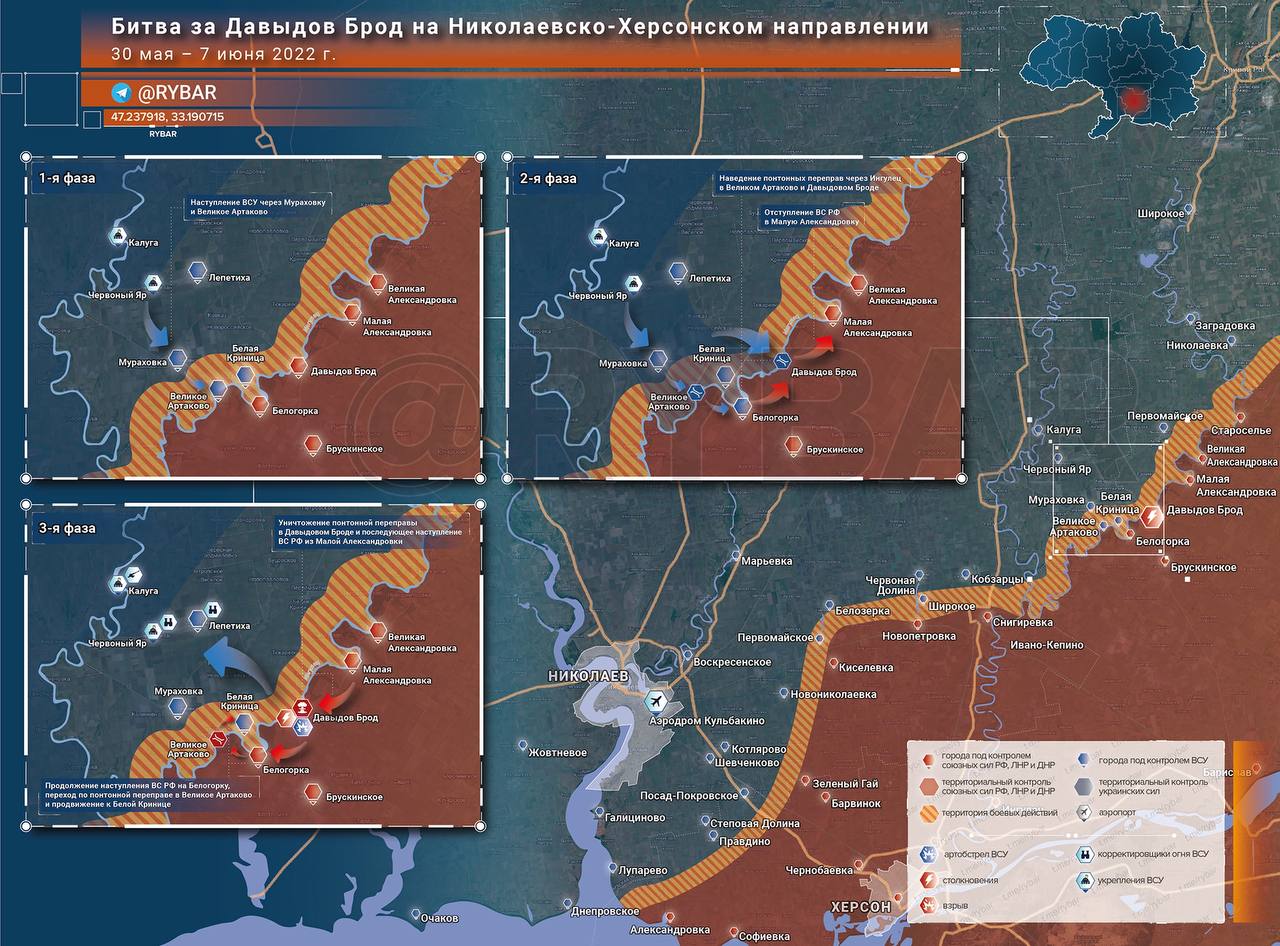From the end of May, Ukrainian media resources began to warm up the public with news about the “mass desertion of orcs” from the front line in the Mykolaiv and Kherson regions. The purposeful media campaign to discredit the units and units of the RF Armed Forces in this area was not aimed at the Russian consumer at all: the target was Ukrainian troops and foreign customers.
The problem with desertion and low morale is acute not only in the Donbass: given the fact that “Westerners” recruited on the street without minimal training were sent to fight for the “southerners” without minimal training, the mood in the UAF group was low.
But after the failures on the Snake Island and the collapse in the Donbass, the command of the Armed Forces of Ukraine needed at least one victory. Therefore, the audience was “warmed up” before the attack on the Nikolaev-Kherson direction began in advance.
▪️Before the start of the offensive on Davydov Brod, the line of demarcation between the Armed Forces of Ukraine and the Armed Forces of the Russian Federation passed, in fact, along the banks of the Vysun and Ingulets rivers. The entire section from Snigirevka to Chervony Yar by the end of May was one continuous gray zone, where sabotage and reconnaissance groups periodically collided with each other.
The Armed Forces of Ukraine occupied two small villages of Kalinovka and Murakhovka, transferring assault units and military equipment there. On the eve of May 30, the construction of a pontoon crossing in Veliky Artakovo began.
At the same time, tactical aviation of the Armed Forces of Ukraine was deployed to the front: aircraft worked on the positions of the RF Armed Forces from airfields in Krivoy Rog and Voznesensk, fighter aircraft worked in response, and Caliber hit the runways.
However, it was possible to pin down the forces of the RF Armed Forces with fire, and the crossing was established.
▪️On May 30-31, the Armed Forces of Ukraine managed to force the Ingulets near Veliky Artakovo and transfer assault units to the southern coast. In the following days, battles began near Belogorka: it was there that the artillery units of the RF Armed Forces and aircraft burned the APU equipment.
True, the ratio in manpower was not in favor of the RF Armed Forces.
▪️The Armed Forces of Ukraine managed to push the RF Armed Forces towards Davydov Brod: the defense in the village was held by the forces of one platoon. Having tied the defenders of the settlement in battle, the Armed Forces of Ukraine set up a crossing already in Davydov Brod itself to bring in additional units.
At that moment, the RF Armed Forces sent reinforcements to this sector of the front: under artillery fire, the platoon holding Davydov Brod managed to leave the settlement.
▪️By June 5, Davydov Brod was under the control of the Armed Forces of Ukraine: in the village, units were united that forced the Ingulets near Veliky Artakovo and in Brod itself.
The Armed Forces of the Russian Federation put the crossing at Davydov Brod out of action and began to strike at the village. All Ukrainian units located in that area ceased to exist.
▪️On the night of June 5-6, the RF Armed Forces launched a counteroffensive in two directions: control over Davydov Brod was returned, and Ingulets was forced through the Ukrainian crossing at Veliky Artakovo.
Russian units entrenched themselves at the turn of Velikoye Artakovo – Belaya Krinitsa on the northern bank of the river.
▪️As of June 7, the Armed Forces of Ukraine retain control over Kalinovka and Murakhivka: however, there are only spotters and aircraft controllers there who correct the fire of Ukrainian artillery from Kaluga.
The RF Armed Forces continue to conduct counter-battery combat and build up a grouping to develop a counteroffensive on the northern bank of the Ingulets.

 English
English Russian
Russian